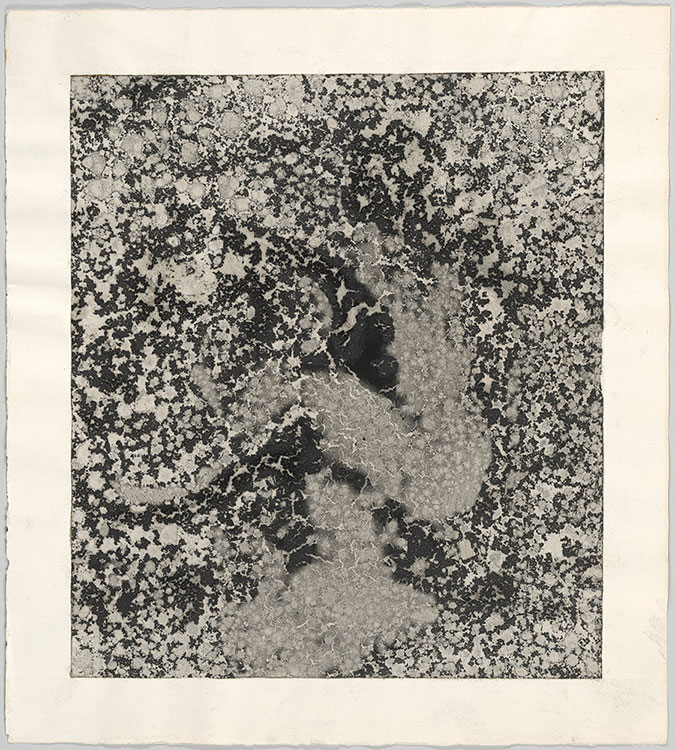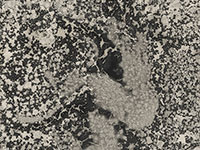
Jack Whitten
1939-2018.
Dispersal 'A' #2
1971
Dry pigment and Rhoplex AC-33 on paper.
19 3/4 x 17 7/8 inches (50.2 x 45.4 cm)
Gift of the Modern and Contemporary Collectors Committee, 2018.
Courtesy The Estate of Jack Whitten and Hauser & Wirth
2018.30
Provenance:
Alexander Gray Gallery, New York.
Catalog link:
Artist page:
Century:
Classification:
Department:


Born in Alabama, Whitten moved to New York in the late 1950s and first adopted the dominant style of Abstract Expressionism. In the early 1970s, however, he turned to the formally and materially innovative works for which he is best known. He identified work on paper as an especially productive arena of experimentation. Dispersal 'A' #2 is one of approximately ten "dispersal" drawings he made. The reticulated pattern of the drawing was created through the interaction of black pigment, water, and AC-33, an acrylic adhesive used in art restoration. As AC-33 dries, it becomes resistant to moisture, which would have allowed him to manipulate the dispersal of the pigment with drops of water. This drawing shows Whitten exploring ideas of instantaneousness and process parallel to the experiments he was making in paintings.